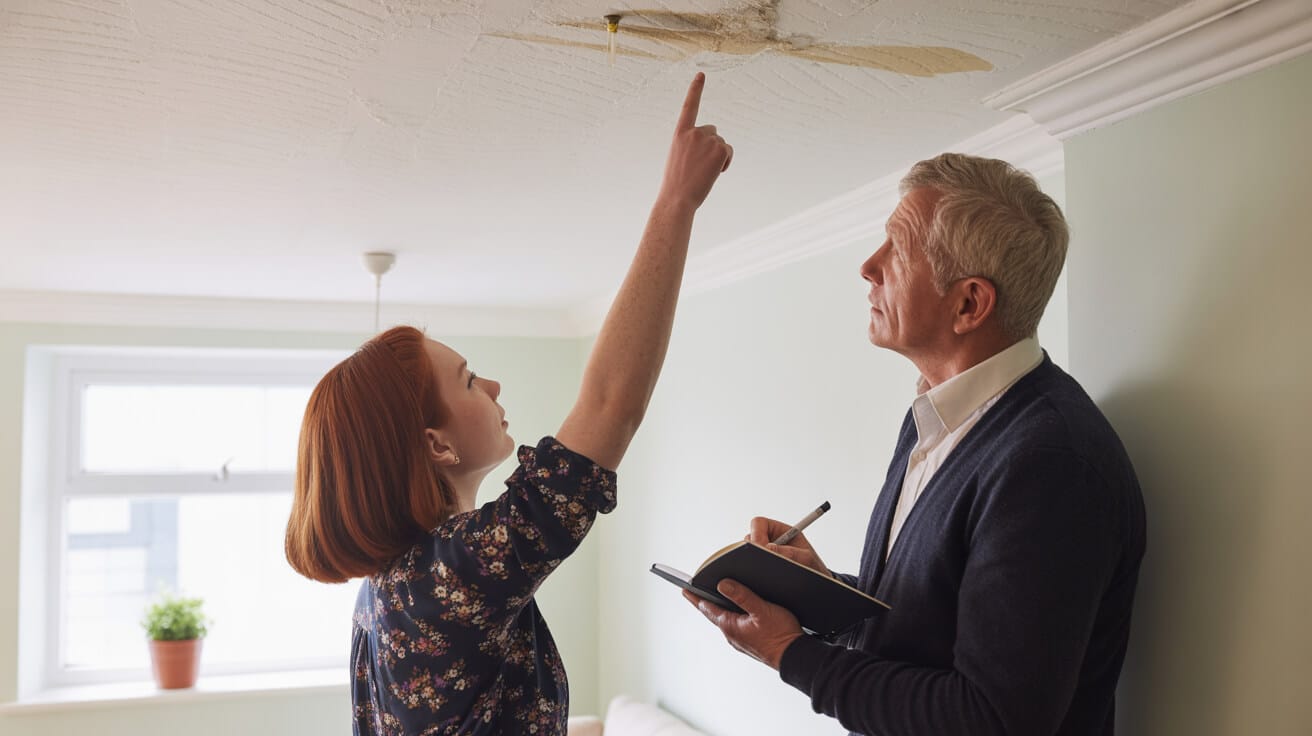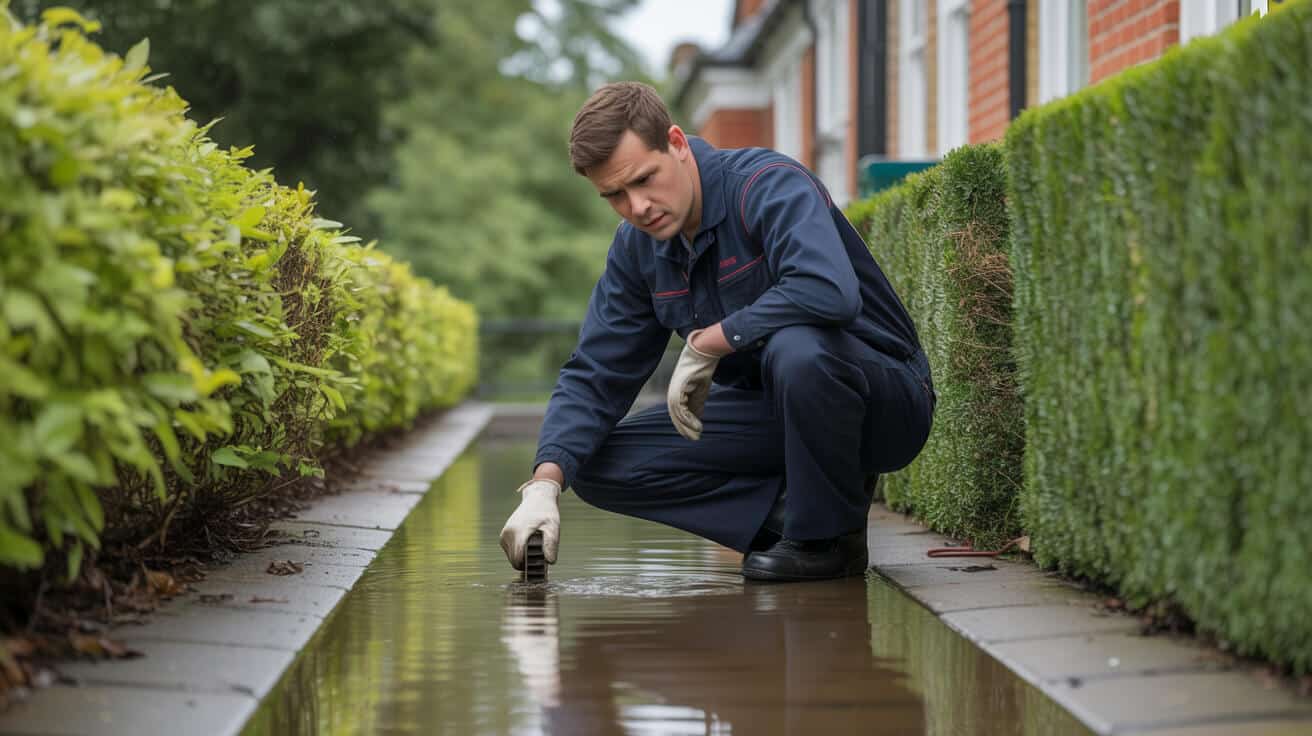 Do I Need an Emergency Plumber for a Leaky Tap
Do I Need an Emergency Plumber for a Leaky Tap

Is That Leaky Tap Really an Emergency, or Just a Noisy Annoyance?
A leaky tap never feels like a big emergency—until you see the swelling under your basin, smell that damp creeping in, or field a tenant’s frantic call about pooling water. What starts as a trickle can quietly slip from “minor fix” to expensive damage, compliance headaches, or insurance runarounds. So, do you need to call an emergency plumber tonight, or will waiting for a routine slot actually save you stress (and cash)?
You rarely go wrong by sorting a small leak before it decides to ruin something big.
People worry about wasting money—but the real cost is delaying when hidden damage is creeping behind the scenes. Plumbers 4U was built for decisive, practical solutions: clear steps, WRAS and WaterSafe standards, zero scare tactics, and straight answers. This guide spells out how anyone—whether you’re a homeowner, landlord, letting agent, or commercial property manager—can judge the urgency, avoid the common traps, and protect what matters.
When Does a Dripping Tap Turn from Annoyance to Emergency?

It’s easy to ignore that slow, rhythmic plink for days—sometimes months—if it just drips into a sink. But ignoring context is how small issues morph into serious risks. A tap leak escalates based on location, quantity, containment, and your ability to shut it off. Not every drip means chaos. But certain warning signs demand you act fast—especially in family homes, rental flats, multi-tenanted offices, or properties with high footfall.
Contain what you can see—but don’t let it reach what you can’t.
Key Emergency Triggers for a Leaky Tap
- Water Spreading Fast: If water is saturating floors, cabinets, kickboards or walls quicker than a towel or washing-up bowl can control, it’s time to escalate. Cosmetic damage turns into rot or black mould distressingly fast in UK housing stock.
- Proximity to Electrics: Drips anywhere near immersion heater outlets, under-sink sockets, or cable runs aren’t a waiting game—this is urgent. Water and electricity mix only in trouble tickets.
- Failed or Inaccessible Isolation: If your built-in shut-off valve is seized, inaccessible, or ineffective, and the water keeps flowing, you need emergency support.
- Broken Tap Body: If the tap cannot physically shut off water, especially with pressurised mains, act as if it’s a burst pipe—don’t wait.
- Multiple or Hidden Leaks: A spreading stain in another room, ceiling, or duct can signal that more than the tap is affected. This elevates the risk, especially in blocks or commercial property.
If none of these apply—if you’ve isolated the flow, the leak is contained, and there’s no threat to electrics or property—you’re safe to book a standard repair. But don’t trust luck; confirm that conditions haven’t shifted before deciding to wait.
What Immediate Actions Minimise the Risk from a Leaky Tap?
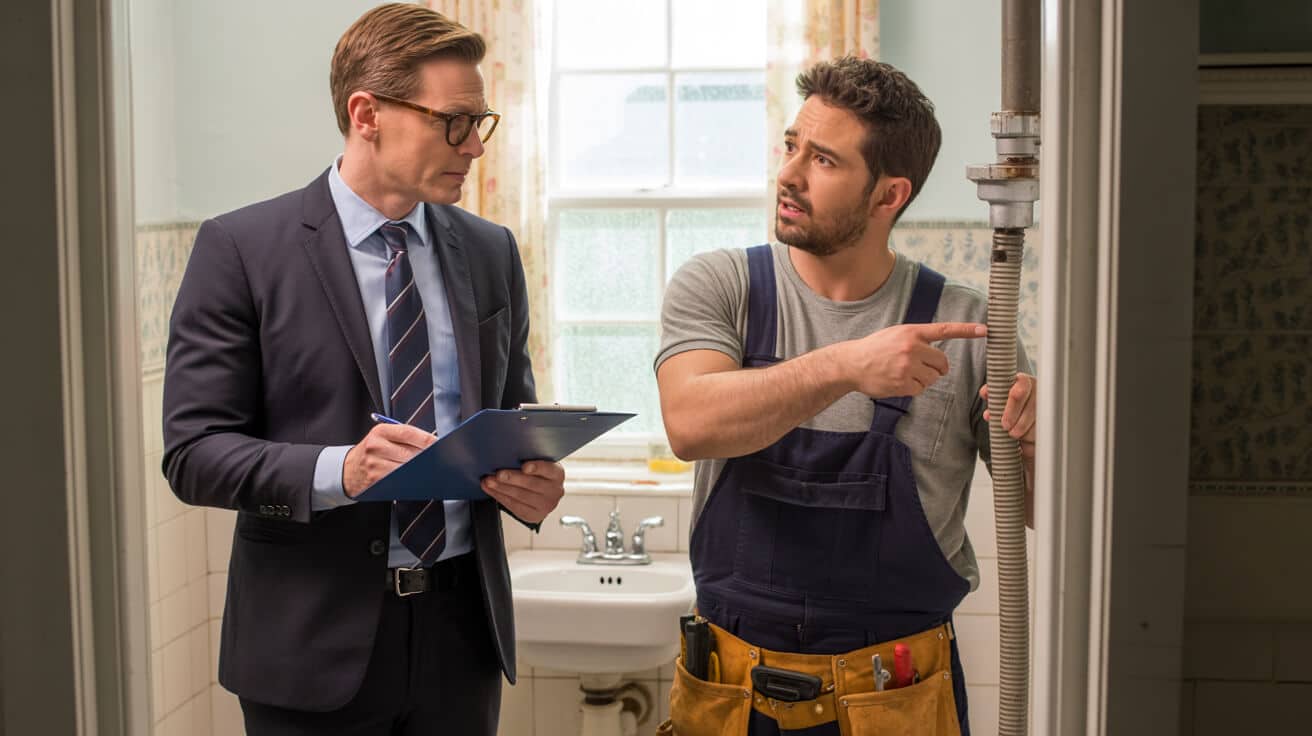
The difference between “nuisance” and “nightmare” often comes down to what you do in the first 10 minutes. Most problems can be stabilised with a clear plan—especially if you’re managing property for others.
Step 1: Isolate the Water if You Can
- Check Under-Sink Service Valves: Many UK houses and flats have simple quarter-turn isolation valves under basins and sinks. A gentle 90-degree turn should stop flow to the tap.
- Main Stopcock: Can’t see an isolator? Go to the main stopcock—very often under the kitchen sink, sometimes in a downstairs cupboard or external metre box. Turn it clockwise until resistance; double-check by running other taps.
- Test for Success: If water stops, relax—the pressure is off. Note: If you’re unsuccessful or can’t confidently locate these, escalation (especially in a block property) is justified.
Step 2: Contain and Assess
- Catch the Leak: Place a washing-up bowl, jug, or bucket beneath the problem tap. Log how long it takes to fill; this will help you judge the risk.
- Check Surroundings: Move toiletries, electronics, and paperwork. Dry up pooled water. Stick a hand under the pipework—if it’s damp or the cabinet base is spongey, you may have ongoing or historic leaks.
- Identify Electrical Risks: Any sign of a drip heading for plug sockets, appliances, or a fused spur? That’s a hard stop—turn off and ring for help.
Step 3: Document and Communicate
- Take Photos: Snap the tap, cabinet, floor, and any suspect damp spots. You’ll want these for insurance or to clarify the issue if you need to ring Plumbers 4U.
- Leave It Accessible: Remove clutter—contractors can work faster, and you’ll cut down on delays if you call for service.
Is It Safe to Wait to Fix a Dripping Tap? Economics, Damage, and Rule of Thumb
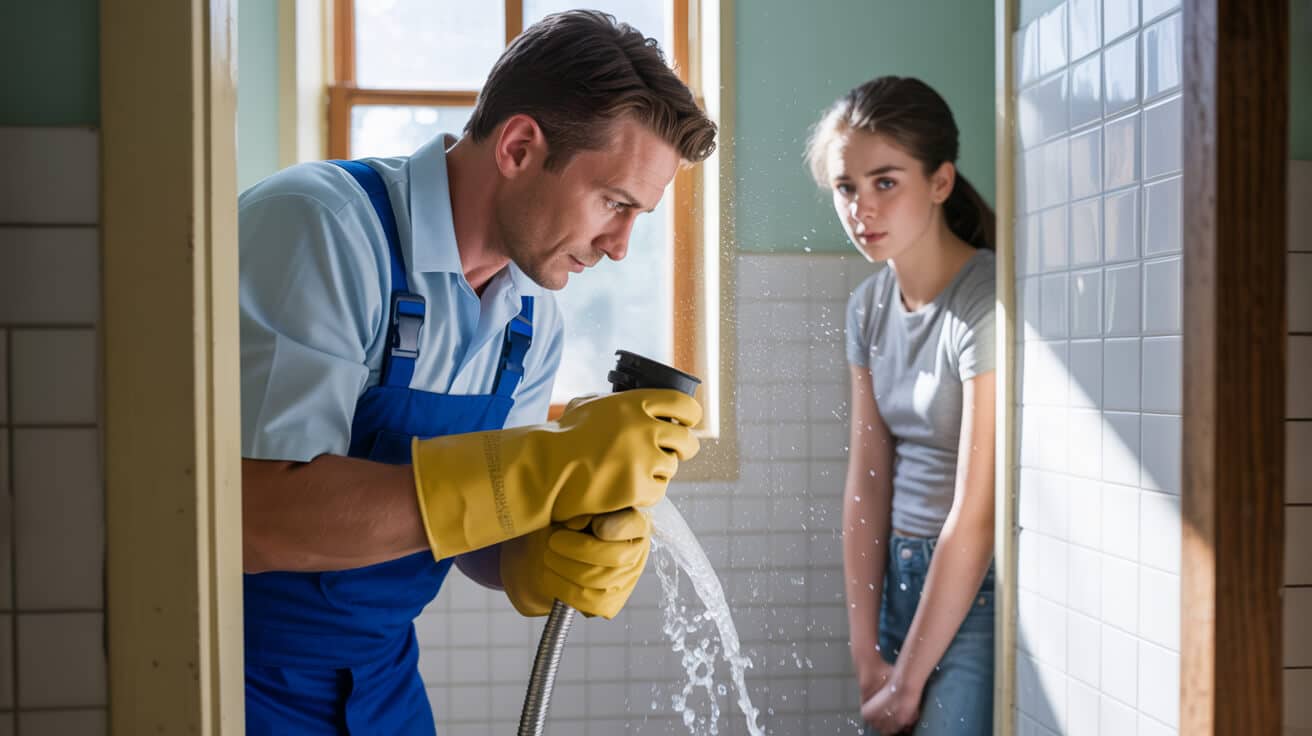
A common myth: “if the leak is small and contained, it’s fine to wait weeks.” That’s the shortcut to hidden costs.
Financially: Just one slow drip often loses 5,000+ litres of water per year—£50-£80 on the average bill, multiplied for landlords with portfolios or commercial washrooms (WaterRegsUK). Hot taps drain energy as well as money.
Structurally: Trapped moisture under sinks, cabinetry, or behind walls is how you get lasting odours, swelling MDF, and warped laminate. Mould waits for nobody. Homeowners absorb the bill; letting agents and block managers can see “avoidable loss” disputes from tenants.
Legality: The UK Water Supply Regulations, plus tenancy law, assign active duty of care to prevent slowly evolving leaks. Delayed repairs, especially for unvented cylinder outlets (G3), mean insurers can reject later claims—and local authorities have cited blocks for water wastage compliance failures.
When you forget a leak, a surveyor remembers it for you—just before you try to sell or remortgage.
A Decision Table: Emergency vs. Wait
| Scenario | Emergency | Wait & Book |
|---|---|---|
| Water is soaking cabinetry/floor | ✔ | |
| Leak near plug sockets/electrics | ✔ | |
| Tap won’t shut off at all | ✔ | |
| Isolation valve working, leak small | ✔ | |
| Drip fills bowl in 2+ hours | ✔ | |
| Multiple leaks at once | ✔ | |
| Can’t access main stopcock | ✔ |
Any factor in the left column? Prioritise health & safety—escalate to an emergency plumber. All clear? Routine booking is spot-on.
What Will a Quality Plumber Actually Do—And How Do You Spot the Real Deal?
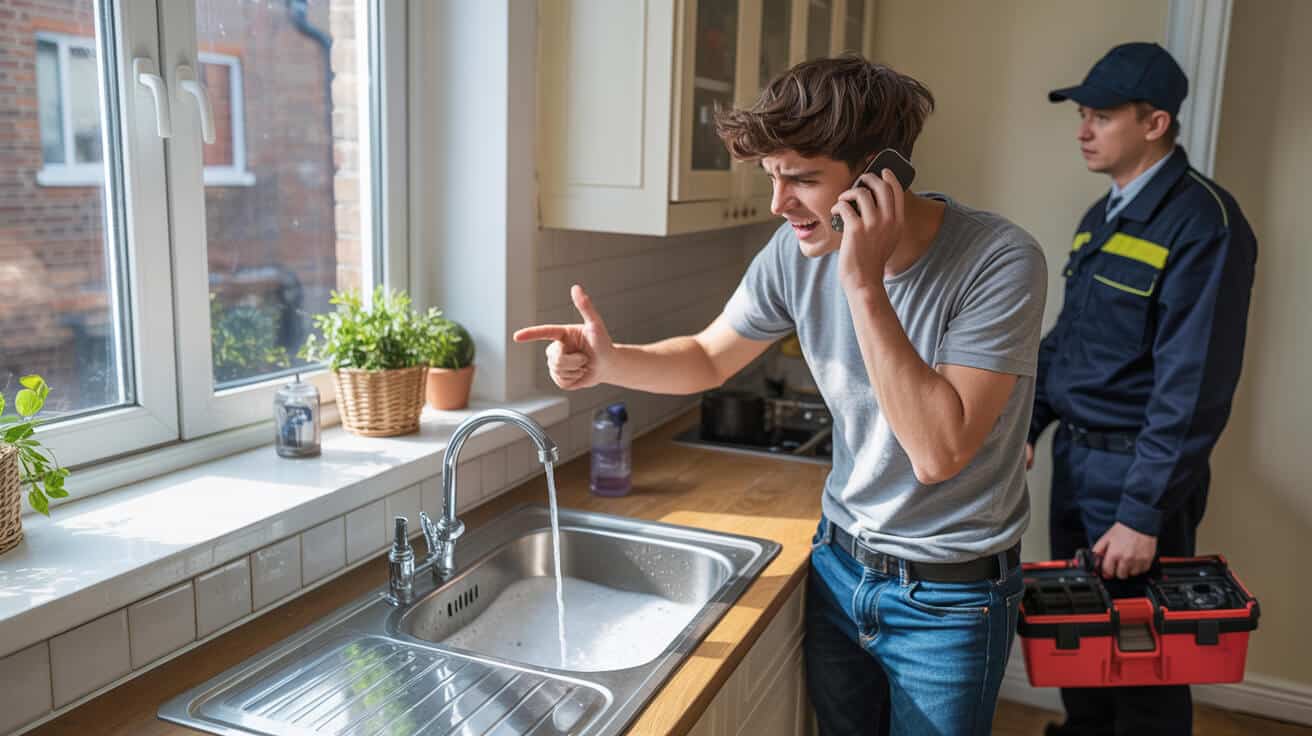
Not every fix is “one washer, ten minutes.” The right plumber focuses on root cause and system health—not just wrapping tape round the problem.
Expect this from any plumber worth your booking:
- Precise Diagnosis: A seasoned tech traces not just surface faults but underlying causes: worn seals, failed cartridges, water pressure imbalances, isolation valve problems. Quick “patch” repairs often push a problem down the line.
- WRAS and WaterSafe Compliance: UK law means every tap, joint, and valve needs certified gear and registered workmanship. Landlords, agents, and facilities managers: this protects your audit log and warranty status.
- Full Documentation: Look for before/after photos, job sheets with parts ID, and a full asset register. Commercial and block managers: this is essential for audit, insurance, and future troubleshooting.
- Client Communication: The best pros walk you through stopcock locations, basic diagnostics, and prevention. No jargon—just clear, actionable advice.
- No Mess, No Drama: Whether routine or urgent, you deserve dust sheets, prompt cleanup, removed old parts, and a demonstration the tap is shipshape.
- No Upsell Tactics: Advice is given so you can prevent future issues—not so you’re badgered into unneeded work.
What Are the Real Risks of “Leave It for Tomorrow”—Especially for Landlords and Agents?
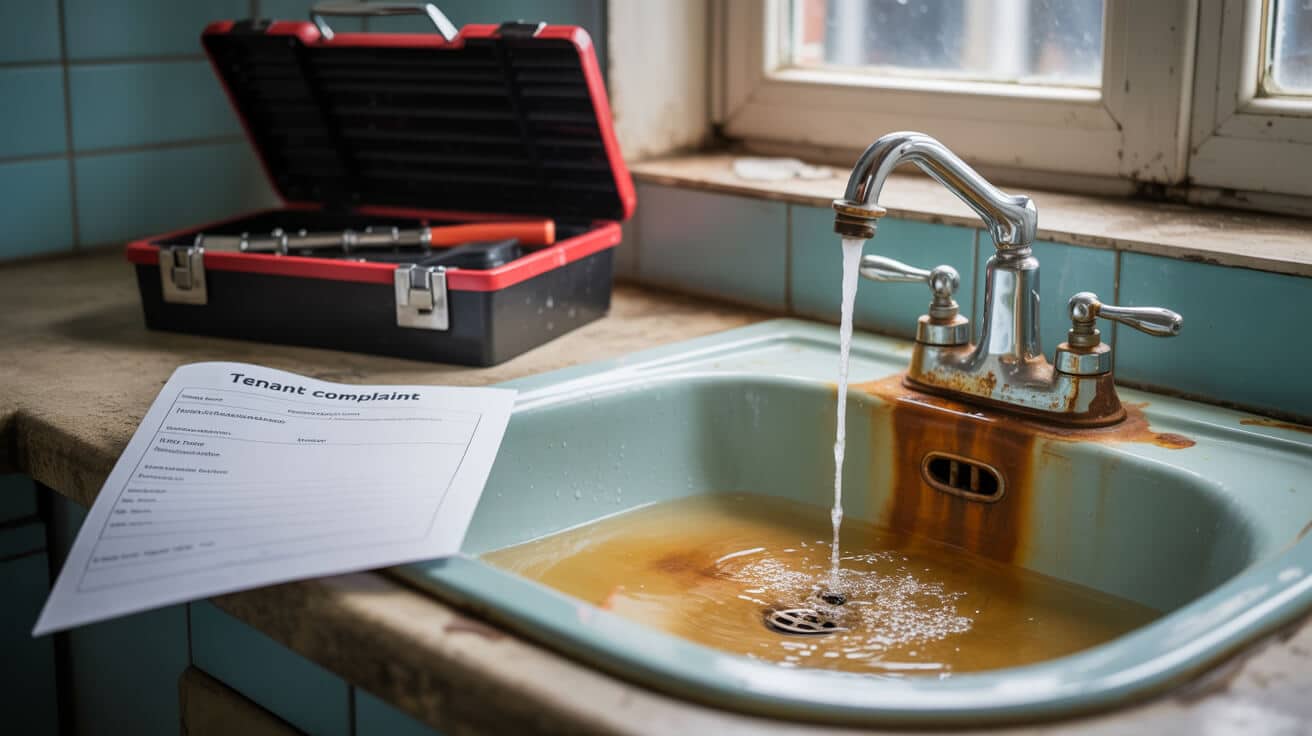
Every professional property manager wants to avoid phone calls about a leaky tap at 6 PM on a Friday. Many “wait and see” to avoid overtime rates, but that approach can bite.
Risks multiply with every absorbed day:
- Damp and Rot: That slow, hidden leak in a vanity base or kitchen cabinet? It’s quieter than a burst pipe but far costlier, inviting black mould, floor swelling, and DIY claim rejection.
- Tenant and Stakeholder Trust: Repeated, unresolved drips test tenant patience or invite negative reviews, hurting your local agent or block’s reputation.
- Insurance/Compliance Exposure: Surveyors and insurers are trained to spot “avoidable loss,” and letting a leak run puts liability back on the landlord or agent. No audit trail = no payout down the line.
- Sale and Remortgage Risk: Evidence of neglected water damage is a red flag to surveyors—expect higher costs and lost sales opportunities
Leave it long enough and you’re not booking a plumber, but a joiner, decorator, and potentially a surveyor too.
How Do Plumbers 4U Turn a Tap Fix into a Complete Protection Package?
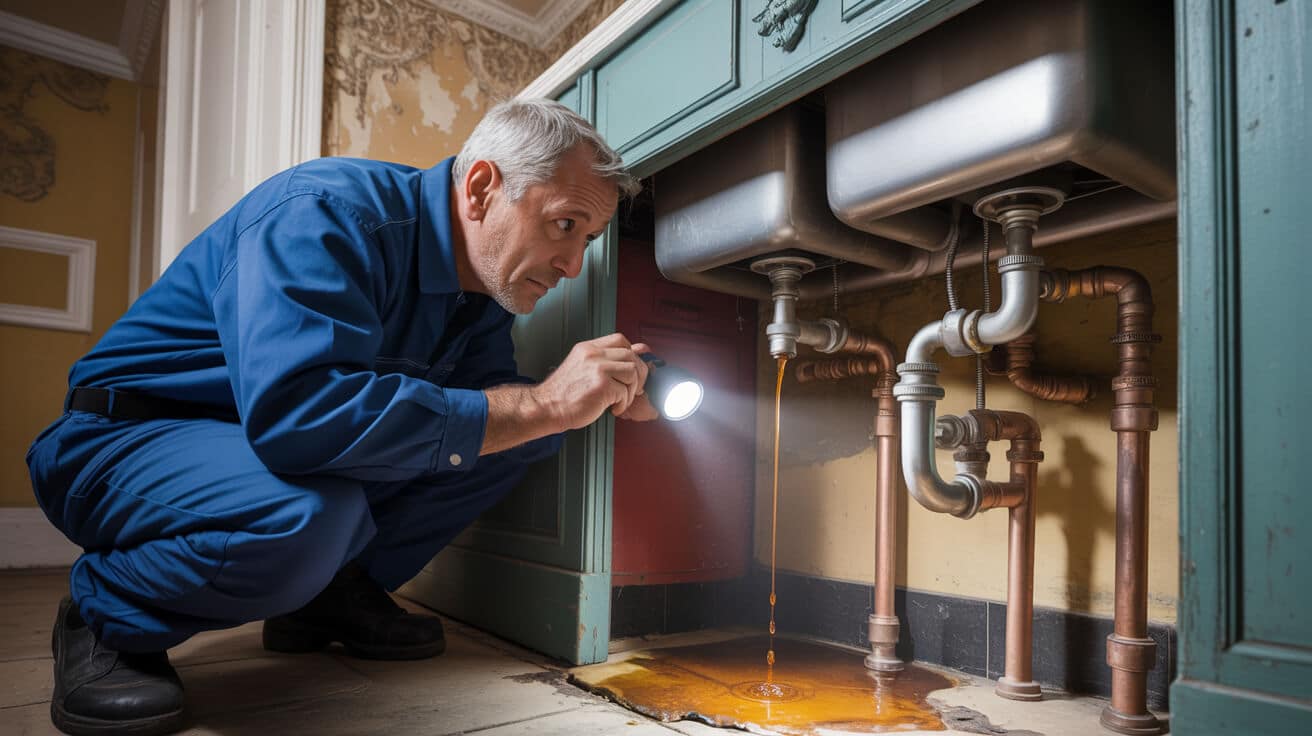
Choosing Plumbers 4U means more than “tick, it’s fixed.” From your first WhatsApp with a photo to the final documentation, the company has wrapped in every compliance and aftercare step. If you’re a landlord, agent, or commercial owner—this is insurance for your workflow.
Here’s how the service protects you at every stage:
- Remote Triage at Contact: Send us a photo. You’ll get a WRAS-approved pro’s opinion—often enough to clarify “repair tomorrow” vs. “call now.”
- Fixed, Transparent Quotes: No guesswork or “that’ll be another few hundred” surprises. You get pricing before the visit, not after.
- Regulatory Championing: WRAS and WaterSafe credentials guarantee you’re bulletproof with audits, tenant law, and Housing Act expectations.
- Job Logs and Photos: Complete digital records for every repair support landlords, letting agents, block managers, and anyone value-focused.
- Aftercare Handover: Your plumber explains stopcock use, simple maintenance, and recurring trouble signals, making every client more confident (and less likely to need an urgent call next time).
If you’re used to spending hours chasing trades, you’ll recognise the value in one point of contact who treats the job like it’s their own property.
Can You Prevent the Next Leak—Or At Least Avoid It Being an Emergency?
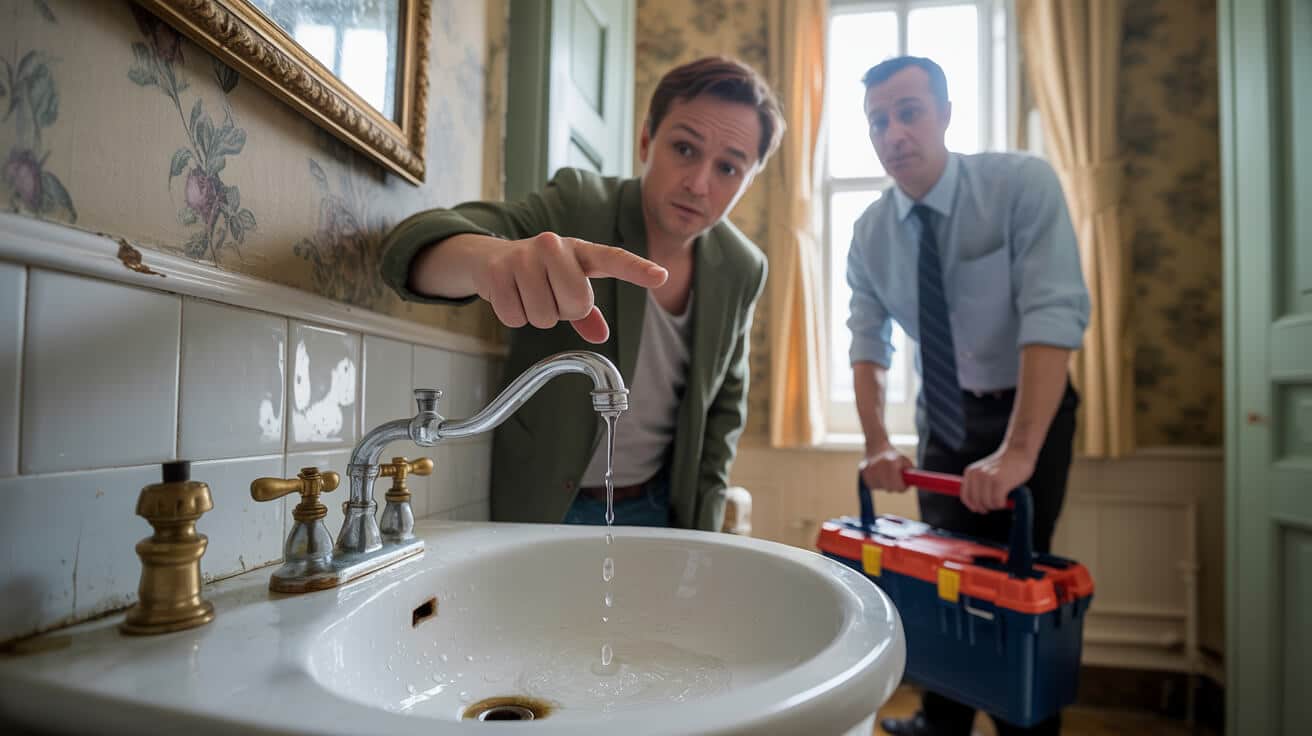
Fixing what’s in front of you is one thing; future-proofing means spotting telltale signs and acting before the “emergency” tag hits. Here’s how you build resilience:
Tap and Isolation Valve Health
- Annual Valve Twist: Run your isolation valves every 6–12 months—prevents them seizing just when you need them most.
- Tap Feel Test: Spindly, wobbly handles or taps “that never quite shut” are quietly warning of sealing fatigue. Don’t wait to replace.
- Cabinet Scan: Open your under-sink or basin cupboards, feeling for damp, checking for odours and soft wood. Early attention saves work.
Documentation and Communication
- Log Every Fix: Whether you’re a homeowner or managing a portfolio, a photo and note explain a world faster than a memory. Plumbers 4U supports this with electronic logs and before/after documentation.
- Maintenance Calendar: For landlords, set recurring reminders for annual tap and stopcock checks. Managing agents, make this part of your legal compliance pack.
Proactive Upgrades
- Fit WRAS-Approved Isolation Valves: These pay for themselves the first time an emergency is averted.
- Upgrade Old Fittings: Swapping out chronically leaky taps and flexible hoses reduces long-term call-outs as cheaply as one emergency.
The best maintenance is invisible—a system that just gets on with the job, leak-free.
Why Choose Plumbers 4U for Quick, Compliant, and Hassle-Free Tap Repairs?
Trust isn’t just about arrival speed—it’s about competence, meticulous documentation, and clear respect for your property (as if it were their own). Plumbers 4U blends top-shelf technical expertise, client-first communication, and regulation-pinned compliance, so you’re always a step ahead.
- Rapid, Reasoned Triage: Whether you call, WhatsApp or email a photo, you’ll get a clear “wait/book” or “emergency/attend now”—without drama.
- Best-in-Class Credentials: Only WRAS and WaterSafe certified engineers—qualified for unvented G3, block property, commercial, or domestic work.
- No Mess, No Surprises: Tidy work, zero “unexpected” add-ons, and a walkthrough of every stopcock, fitting, and new part installed.
- Audit-Ready Repairs: Paper trail and photo log with every job. For block managers and landlords, this is your invisible insurance policy.
- Peace of Mind Aftercare: Clear advice on prevention, early signals, and future upgrades—personalised to your system and property profile.
- Fair, Transparent Pricing: You approve the cost before any repair starts—no creeping day rates or “overtime” shocks.
Bringing you the comfort of knowing that when you do need help, you’re fifteen minutes away from the relief of a clean, compliant, and fully documented fix.
Take Charge—Contact Plumbers 4U and Move On from Drips and Doubt
A tap’s decision to start leaking isn’t within your control. Your response absolutely is. The smart play: treat leaks as system signals, not background noise. Whether you want to keep your block compliant, satisfy tenants, or just protect your home from hidden issues, proactive action wins every time.
- Photo triage: Free assessment—WhatsApp or email a snapshot for instant expert input.
- Transparent, WRAS-approved fixes: All work carried out by certified pros. No mess, no fuss.
- Routine or Emergency Attendance: You decide urgency, we’ll do the rest—no padding, no pushy upsell.
- Complete Documentation: Digital/photographic record to support claims, compliance, or just your own sanity.
- Practical Aftercare: Leave with knowledge—not just an invoice—on how to spot early warnings, maintain safety, and prevent future headaches.
Own your property’s wellbeing. Book Plumbers 4U for every leak—big or small—and move on with confidence.
Frequently Asked Questions
What makes a leaky tap more dangerous than most people assume?
A simple leaky tap is rarely just an inconvenience. Once water seeps outside the basin or starts soaking into cabinets or floorboards, the situation can escalate to a full-blown emergency in a matter of hours—threatening not just your property, but also regulatory compliance. If water is running toward electrics or you can’t stop the flow with an isolation valve, the risk multiplies quickly. For home and business owners, delay increases damage and drains value, but for landlords and managing agents, there’s a legal obligation to act fast before tenants suffer losses or health hazards.
Most costly water disasters began life as a small, ignored trickle beneath a sink.
Beyond visible puddles, don’t ignore warning signs like hissing pipework, mysterious pressure drops, or a handle spinning without resistance. These often indicate a fault deeper in the plumbing that could be leaking somewhere you can’t see. Property managers and landlords, especially those with older pipework or flats converted before 2000, should treat unexplained leaks with urgency; insurers and letting regulations require timely mitigation to safeguard assets and occupants.
When should a leaky tap trigger emergency action?
- Water escaping onto the floor, electrics, or through cabinetry
- Isolation valves or main stopcock can’t halt the leak
- Leak rate increases suddenly or spreads to other pipes/taps
- Vulnerable individuals (elderly, children, tenants with additional needs) are at risk
- Pressure loss happens across several outlets, indicating major system trouble
When in doubt, a prompt call to a reputable plumber like Plumbers 4U can prevent minor trouble from draining your day with avoidable repair costs and paperwork.
How can you contain a leaky tap right now and decide if you need professional help?
Immediate containment means you minimise both the mess and the long-term costs. First, see if the leak is just a slow drip into the basin; if so, you can isolate the cold or hot supply with the small lever or round valve just beneath the sink—turn it by a quarter-turn. If water continues to run or is escaping through the cabinet, turn off your home’s main stopcock, which is usually by the kitchen sink or in a utility cupboard. Remove anything stored around the pipework, plug out any nearby appliances, and mop up standing water; act quickly if you notice paint bubbling or cupboards swelling.
A quick photo and the right valve turned can spare you the headache of thousands in hidden damage—plus it’s vital for any insurance claim.
Next, document the fault—photos of the leak, puddles, and any visible damage are proof for both insurance and the plumber who’ll repair it. If you can’t stop the leak fully, see water pooling on the floor, or smell musty dampness you can’t trace, escalate immediately. Many companies, including Plumbers 4U, offer video triage to guide you on the next steps remotely before a callout.
Steps to control a leaky tap before a plumber arrives
- Isolate the supply with under-sink valves or the main stopcock
- Clear cabinets of anything absorbent to prevent hidden water damage
- Unplug and remove electrics or electronics near water
- Photograph the leak, stain, and any spreading moisture
- Watch for any signs of spread, noise changes, or new leaks
Don’t wait for things to settle—water damage compounds invisibly, especially in woodwork and plasterboard. Proactive measures today lock in peace of mind and reduce both stress and costs tomorrow.
What criteria separate a manageable tap leak from an urgent plumbing callout?
It can be tempting to wait and watch, but misjudging urgency often ends in regret. If water is escaping anywhere outside the sink or bath and can’t be contained by valves, count that as urgent—especially in kitchens with MDF cabinets, near power sockets, or where young children or elderly residents may slip or suffer electrical hazards. If a leak persists despite local isolation or the stopcock, or if dampness appears in new places (like under appliances, adjacent rooms, or behind walls), the risk to your property quickly outweighs the inconvenience of an urgent repair bill.
A slow, contained drip—one you track filling a cup only every few hours—can usually wait for a scheduled visit, provided there’s no swelling, staining, or strange noises in pipes. As soon as bowl-filling rates accelerate, valves don’t work, or pressure drops in more than one tap or appliance, don’t take chances.
When does a leak demand immediate action?
- Water can’t be stopped locally or at the mains
- Pooling occurs near plug sockets, woodwork, or anywhere with cables
- Several outlets show pressure loss simultaneously
- Tap or handle is loose, hissing, or vibrating
- Residents are at heightened vulnerability (very young, elderly, or mobility challenges)
When is it safe to monitor and book routine repairs?
- Only a slow, contained drip present in the basin
- Full isolation achieved and no escalation after 24 hours
- No visible spread, swelling, or warping of nearby structures
- No risk to electrics, no vulnerable users present
If circumstances aren’t crystal clear, request remote assessment from Plumbers 4U, who can guide you based on real-time symptoms and ensure you’re not left hoping for the best while risking more.
How do hidden leaks from a faulty tap snowball into thousands in preventable damage?
A leaky tap’s real cost isn’t limited to water bills—although even a single drip can waste over 5,000 litres in a year, and landlords can face utility deductions from damage claims. More insidiously, water silently seeps beneath floors and through cabinet bases, feeding mould, swelling woodwork, and fostering environments where pests thrive. Once electrics and underfloor insulation are affected, the numbers soar: average UK data shows restoration after undetected water leaks frequently surpasses £1,000 for flats and £2,500 for homes with underfloor heating (Source: ABI 2023).
Ten pounds ignored now means ten hundred in repairs when swelling, staining, and black mould have time to spread unseen.
Failure to intervene promptly breaks more than bank accounts—it trips up landlords on deposit laws, managing agents on insurance timelines, and can get commercial property excluded from claim payouts if the insurer finds delays in reporting or mitigating a leak. For homeowners and renters, it’s about health: black spots of hidden mould can trigger asthma and allergies, especially in older buildings or below kitchens and baths.
Common consequences of delayed intervention
- Swollen and warped cabinets, leading to full kitchen or bathroom refits
- Black mould requiring chemical removal or replacement of timber/gypsum
- Defunct electrics, risk of fire, or insurance audit failures
- Rental deposits lost or contested due to reported vs. actual repair timelines
- Increased water bills and environmental penalty charges for large commercial sites
Every step you take as soon as trouble appears is a multiplier in your favour—document, contain, and act, and the future you face will be dry, safe, and dispute-free.
What warning signs suggest an urgent tap repair is needed and what issues can wait safely?
Not every dripping tap signals disaster, but certain clues force faster action. If water seeps outside containment or spreads toward wiring, stop guessing and call in an expert. For properties with high turnover (HMOs, rental flats, hotels), risk doubles—any suspicion of ongoing water exposure should trigger immediate booking, not least because inspection logs and compliance certificates now demand proof of timely action.
Isolation valve jammed? Leak noises inside walls? Odours or moisture marks growing after you dry up a spill? These are the signals DIY fixes won’t cover, especially if coupled with pressure dropping housewide or electrical faults. For non-urgent issues—a truly minor, slow drip safely contained—daily tracking and prompt scheduling suffice, but keep photographic records and don’t relax your guard over weekends or holidays.
Table: Emergency versus Routine Response
| Emergency: Act Now | Routine: Book and Monitor Safely |
|---|---|
| Leak unstoppable by isolation/stopcock | Leak isolated, contained, and not worsening |
| Water pooling near electrics or appliances | No electrics or laptop chargers near the leak |
| Spread to other rooms or under adjacent floors | Confined only to a single outlet/basin |
| Multiple leaks or systemwide pressure drops | No new leaks, no sound or pressure changes |
| Presence of vulnerable residents or guests | Adults only, risk fully assessed |
Services offering immediate advice—like Plumbers 4U’s phone and video triage—make risk assessment simple. Their team walks you through technical steps or recommends fast site attendance when the facts warrant it.
How can certified plumbers future-proof your property and provide ongoing protection against tap emergencies?
Accredited plumbers offer far more than quick fixes—they examine every link in your supply chain for faults, compliance, and resilience. This starts with a system check of pressures, valves, and material standards; every replacement is with WRAS/WaterSafe-approved parts, and repairs are always logged with before-and-after photos, part codes, and written guarantees. Such robust documentation matters for both insurance and audit readiness, and offers peace of mind for landlords and commercial managers who must prove their duty of care was maintained.
The difference between a guarantee and a gamble is knowing every fitting and valve in your system has been tested, traced, and written up professionally.
For major portfolios or single flats, what matters is that the repair isn’t temporary—the cause is found, the fix is durable, and you know what to look for next time. Firms like Plumbers 4U stand apart by offering walkthroughs of all shutoff points, explicit aftercare instructions, and compliance certificates (G3, Part G, CP12) where needed—all of which could prove essential in future legal, letting, or insurance scenarios.
Lasting benefits of accredited repairs
- Assurance that no substandard or non-compliant parts will be used
- Written logs, part numbers, and photographic proof for every stage of repair
- Guidance on reporting and aftercare, minimising repeat leaks or escalation
- Full alignment with G3, WRAS, WaterSafe, and landlord checklists
- Access to ongoing support—routine, urgent, or proactive protection across homes, offices, and tenancies
When you choose professionals who take ownership of every step, you’re not just stopping a leak: you’re locking in value, trust, and regulatory security for years to come.

